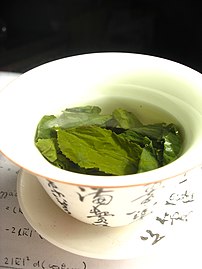[amazon_link asins=’B001AQTUK4,B01LYR34WA,B0074A2P66,B003WO0IVM,B01BJ5JQ36,B073YN5SRK,B01DQTMAOA,B06Y451LXL,B00G1XQ3JC’ template=’ProductCarousel’ store=’finmeacur-20′ marketplace=’US’ link_id=’667d2039-db12-11e7-843f-afbf716b9b65′]
Some juice is so acidic, it can take part of your teeth with it.
New warning: A U.S. expert says orange juice is so strong it can ‘literally wash away your teeth’
Fruit beverages can cut enamel hardness by 84 per cent causing teeth to erode more than previously thought, according to one U.S. expert.
Dr Yan-Fang Ren, of the Eastman Institute for Oral Health, at the University of Rochester Medical Centre in New York, said the acid in orange juice ‘is so strong that the tooth is literally washed away’.
Dr Ren and his team made the discovery after studying the effects of over-the-counter teeth whitening products.
He found the effect of six per cent hydrogen peroxide, the common ingredient used for teeth whitening, was ‘insignificant’ compared with acidic fruit juices.
The orange juice markedly cut hardness and increased roughness of tooth enamel.
The researchers used a revolutionary vertical scanning microscope for the first time to see the extensive surface detail on teeth.
It has long been known that fruit juice and carbonated drinks have high acid content and can reduce the strength of enamel.
Dentists have advised some of these drinks should only be consumed with a straw or at the same time as eating food.
But the damaging effects of drinks could be worse than previously thought, according to the article in the Journal of Dentistry.
Weakened and eroded enamel may speed up the wear of the tooth and increase the risk of tooth decay developing and spreading.
Dr Ren said: ‘Most soft drinks, including sodas and fruit juices, are acidic in nature.
‘Our studies demonstrated that the orange juice, as an example, can potentially cause significant erosion of teeth. It’s potentially a very serisevereous problem for people who drink sodas and fruit juices daily.
‘We do not yet have an effective tool to avert the erosive effects, although there are early indications that higher levels of fluoride may help slow down the erosion.’
Dr Ren advises consumers to be aware of the acidic nature of beverages, including sodas, fruit juices, sports and energy drinks.
The longer teeth are in contact with the acidic drinks, the more the erosion will be.
Those who sip their drinks slowly over 20 minutes are more likely to have tooth erosion than those who finish a drink quickly.
Dr Ren said it is important to keep good oral hygiene by brushing teeth twice a day with fluoride toothpaste.
The research comes after a recent study revealed that drinking fruit juice dramatically reduces the effectiveness of drugs used to treat cancer, heart conditions and high blood pressure.
Research has shown that orange, apple and grapefruit juice can also wipe out the benefits of some antibiotics and hay-fever pills.
It is thought the drinks stop drugs from entering the bloodstream and getting to work in the body – possibly rendering them useless.
The potential effects are so serious, researchers warned, that if in doubt patients should swap fruit juices for water when on medication.
Source: Mail Online. 2nd. July. ’09
Related articles by Zemanta
- Acid Drinks Blamed for Increase in Tooth Erosion (nlm.nih.gov)
- Sports Drink Causes Tooth Erosion – Study (realnutritionsupplement.blogspot.com)
- Lay That Lemon Down (time.com)
![Reblog this post [with Zemanta]](https://i0.wp.com/img.zemanta.com/reblog_e.png?w=580)












